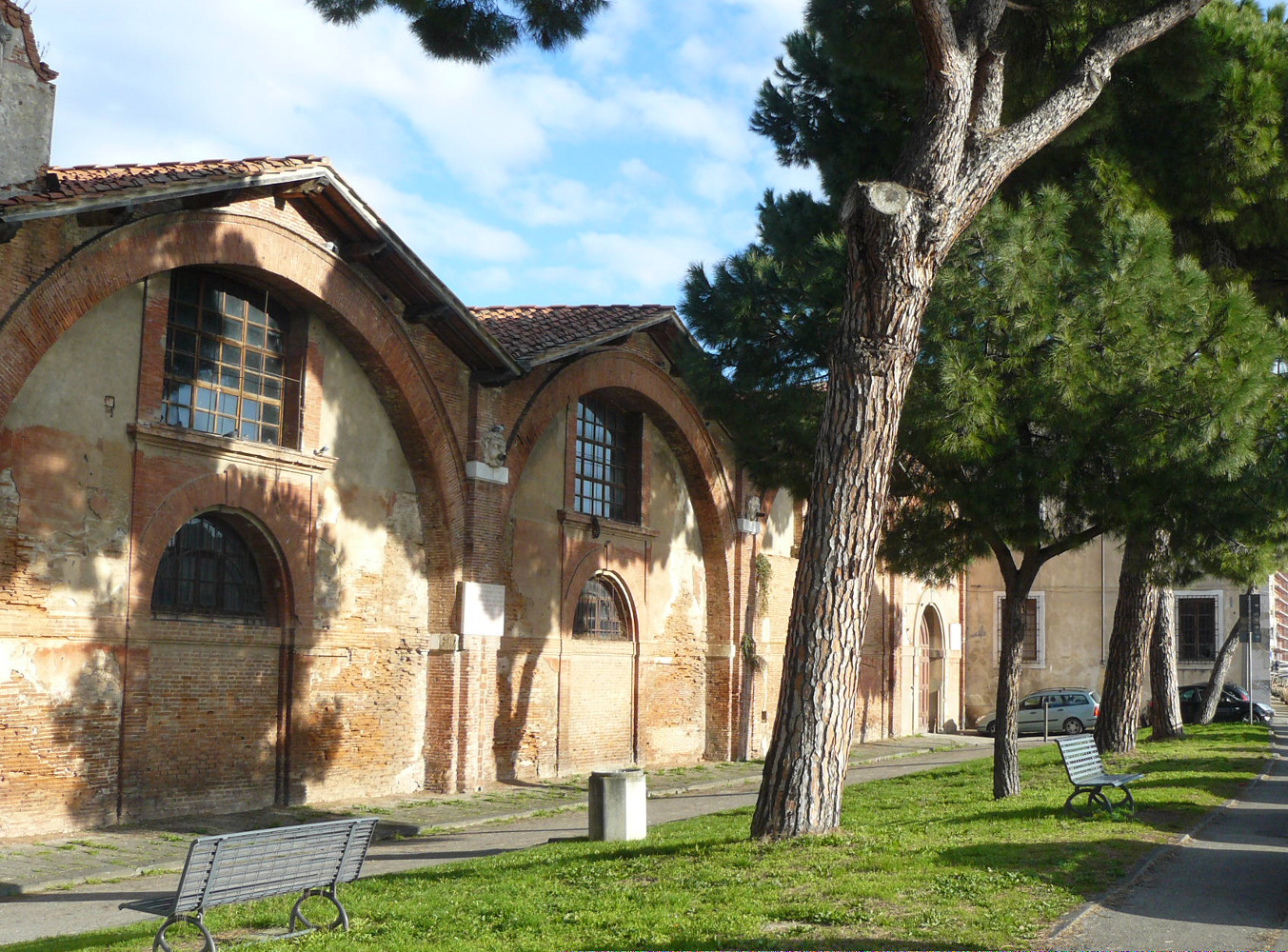
The Arsenals
The birth of the Arsenals: the Grand Duke’s dream
The exhibition of “Le Navi Antiche di Pisa” takes place in the majestic rooms and aisles of the “Arsenali Medicei” (the Medicean Arsenals), along the Arno river.
This place immediately seemed perfect to host ancient testimonies of the city of Pisa, such as, of course, the great Roman ships. The Arsenals were ideal as they are themselves essential witnesses of Pisa maritime history.
They were built almost 400 years ago by Grand Duke Cosimo I de’ Medici’s will. He wanted to strengthen his naval power and resuscitate the ancient glories of Pisa Maritime Republic. To achieve this goal, he did not stop with the Arsenals: he even founded the Order of Santo Stefano (Saint Stephen) Knights. It was a military order strictly linked to the sea, created as a direct match to the new Arsenals. As a matter of fact, they had their own naval academy close by, in Piazza dei Cavalieri, and that specific building was planned by Vasari himself, whereas most of their fleet was built specifically at the Medicean Arsenals. So, both the Arsenals and the Order were part of one grandiose project aiming to increase the Grand Duke’s naval power. The Knights had to face and contrast the Saracenic expansion over the Mediterranean Sea, as well as to protect trading routes that were tormented by Turkish pirates.
The decadence: from Arsenals to storerooms
The Arsenals in Pisa soon became neglected as new ones were built in Livorno and Portoferraio. However, the final blow to Cosimo’s dream was a change in naval policy. As the State diminished requesting big fleets, the private shipyard branch increased. The Grand Duke’s Arsenals could not attend to private ship building by means of social decorum and this was the reason why no more ships were built in Pisa Arsenals. They became storerooms linked to defensive purposes of the nearby Citadel, a fortress facing the sea.
From ships to horses
That was, nonetheless, not the end of the Arsenals’ story. The building was indeed destined to change its purpose again in the centuries to come. It would not be tied to the sea anymore: as a matter of fact, during the 18th Century the Arsenals have been transformed into cavalry barracks. The “guests” of the stables were not common animals: only the horses of the Dragons, the Lorena family cavalry, could stay there. In 1809 the nuns were dispossessed of their nearby monastic complex of San Vito, which was then included in the cavalry barracks.
Since the unification of Italy (1861) the Arsenals became a center of horse breeding of Savoy State and it remained operational under the Italian Army until 1965.
Ancient histories, new meanings: the museum outfitting
The Arsenals are a place filled with history, now loaded with new meanings. This place represents the long-lasting relationship between Pisa and sailing thanks to the exhibit of finds, but also to the building itself: it is a symbol of the Grand Duke’s will to revive the times of Pisa a Maritime Republic.
These are all the reasons that brought to the conservation and preservation by all means possible of the structure of the Arsenals. This choice influenced the museum outfitting, especially in the “minor” rooms on the hallway. Here the maintenance of the horse boxes with gates and drinking troughs imposed a splitting of the narration into chapters, thus allowing the visitor to further divide the 8 thematic sections in small moments to be enjoyed step-by-step.
On the other hand, the majestic rooms and the aisles, originally built to accommodate great Grand Duke ships, are now the perfect place to display the wonderful restored ships. Here the grandiose Roman ships are exhibited, as a starting point for the long history of sailing in Pisa, now finding new life inside the rooms of the museum.